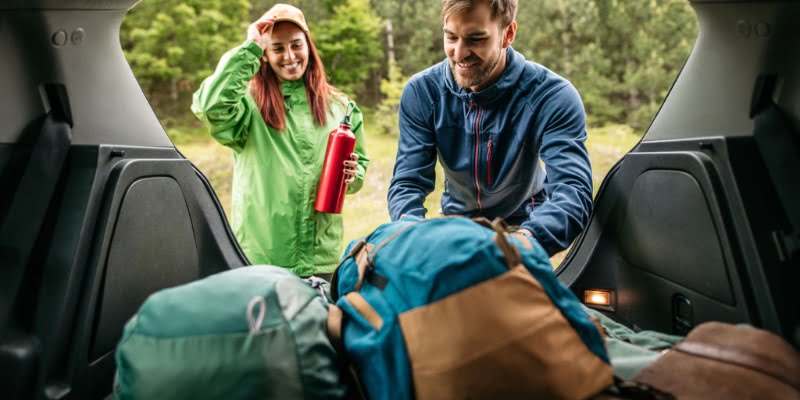
Are you looking forward to your next camping holiday and want to prepare yourself optimally for rain? Would you like to know why smart campers pack old newspapers when it rains?
Well, a waterproof tent with at least 2,000 mm water column is a good start, but it doesn’t stop there. It takes more to keep your tent dry and cozy. Plastic bags, extra-wide tent pegs, a waterproof backpack, and of course the right rain gear make your camping trip much more pleasant.
This checklist is designed to help you make the most of your rainy camping adventure.
A Checklist For Rainy Camping Adventures
Let’s see the 14 essential gear for camping in the rain to make your trip memorable…
1. Quick-Drying Towels
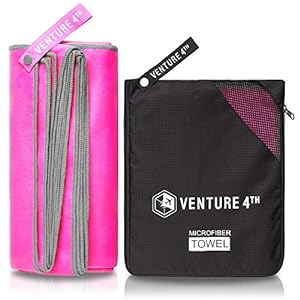
Quick-drying towels are crucial for camping in rainy days, especially when everywhere’s wet and humid. Towels can be used to dry off the tent floor, camping furniture, and even yourself after a rain shower! They rapidly absorb moisture from wet gear and bodies, preventing hypothermia and discomfort.
But what if the towels themselves got damp?
You pack a huge pile of spare towels. Or a single quick-drying polyester towel. The microfiber towel absorbs moisture extremely well and dries much faster than a normal cotton towel. It feels pleasantly fluffy on the skin and weighs 50% less than cotton cloth. So you can save a lot of space and weight in your luggage.
2. Waterproof Pack Sacks
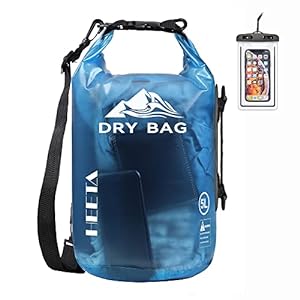
Waterproof pack sacks are vital for rainy camping. They create a barrier, safeguarding your gear from rain and moisture. Packsacks, made of higher quality materials, are more sophisticated substitutes than plastic bags. With these ultralight drying bags, you can perfectly protect your food, wallet, and notebook from moisture.
Good packsacks are equipped with multiple straps and clips. They can therefore be opened easily and closed particularly securely. Another big advantage: The PU-coated polyester bags are so robust that you can use them endlessly. That is why they are more environmentally friendly than normal plastic bags.
3. Cozy Blankets
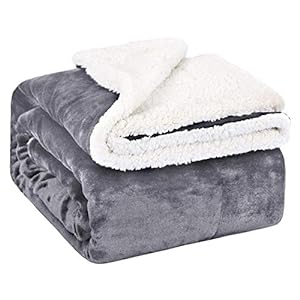
A few extra blankets are always a good idea when camping, especially when it’s raining heavily. Because when it rains, the temperature drops and the humidity increases.
That is why you will look forward to a warm, dry additional layer at night. But blankets also spread coziness during the day. Thanks to a blanket laid out on the tent floor, the floor is no longer damp and cold, and pleasantly warm and soft. When you are wrapped in a cozy blanket and have a hot cup of tea, the gentle drumming of the rain on your roof is a wonderful experience.
4. Windproof Gas Burner
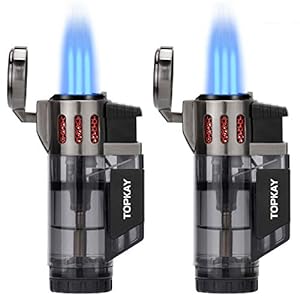
When it rains, you want a reliable, waterproof, and windproof tool to light your gas stove, campfire, or something else. Matches are the exact opposite of waterproof and windproof. A small gas burner is ideal. It works perfectly in high humidity and you can use it at all possible angles without burning your fingers.
A windproof burner is designed with features like a built-in windscreen or protective shield. This shields the flame from gusts, allowing you to cook without interruptions. Even strong winds cannot blow out your gas burner. This is particularly important for safely preparing hot meals in adverse weather.
5. Extra Long Rain Ponchos
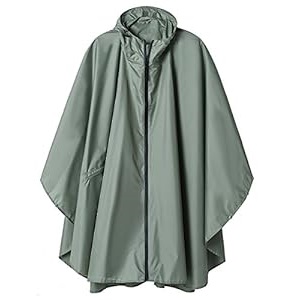
You must need rain ponchos for you and the rest of your group to go outside when it rains. A rain poncho can be thrown over remarkably quickly. This makes it useful for short trips outside the city area. You can also wear your poncho when you arrive at the campsite while you pitch your tent.
A good rain poncho is much longer and wider than a normal rain jacket. This will protect a much larger area of your body from moisture. Most rain ponchos on the market are wide enough that you can transport your backpack and other luggage under the poncho dry through the rain. That is why it should not be missing from any camping packing list.
6. Spacious Pavilion
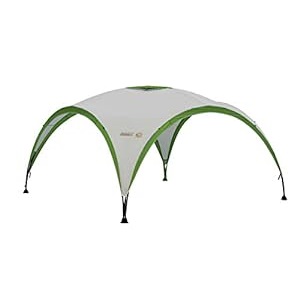
A large pavilion is a must-have for any camping group that spends time in wet nature. Under the waterproof canopy, there is plenty of freedom of movement and enough space to set up a table and several comfortable camping chairs.
A good Pavilion has removable walls that you can use to protect yourself from side rain. Because it is often windy especially when rains, the pavilion should have sturdy poles made of steel or fiberglass.
I love to enjoy the view of nature and the fresh, clean air on a rainy day, while the rain beats rhythmically on the pavilion roof. I do not recommend folding pavilions made of aluminum as they are more suitable for good weather. It is much lighter and more spacious under a pavilion than in tents and caravans.
7. Strong Extra Tent Pegs
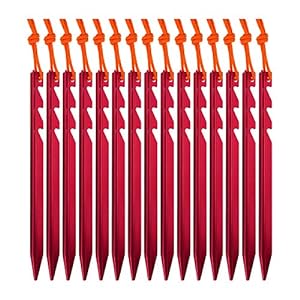
Make sure you have packed some extra strong tent pegs! When days of rain have softened the ground, the standard tent pegs that come up with most tents will no longer find a hold.
Wide tent pegs are ideal for soft floors. A strong signal color (for example orange) makes it easier for you to find it in the muddy ground if a line should come off. Make sure to pack a few more pegs than you need. They will be your savior when the rain is accompanied by strong winds. Or you want to open a tarpaulin as additional rain protection.
8. Protective Groundsheet
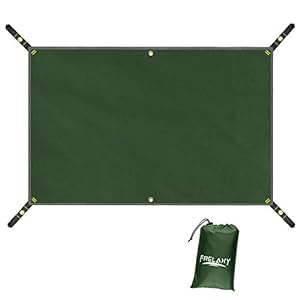
Groundsheets are the ultimate protective shield between you and the wet ground. They prevent your tent floor from being damaged by branches, sharp stones, and water from entering the tent through small holes in the floor. In addition, the groundsheet insulates the tent floor against the cold and lets you sleep warmer and more comfortably at night. So put at least one sheet under your tent.
The groundsheet should be about the size of your tent floor. Also, make sure that no parts of the sheet are sticking out from under the tent. Otherwise, the groundsheet will collect rainwater under the tent. Therefore, fold in protruding corners of the sheet and stow them under the tent.
Another advantage of the groundsheet is that you can more easily clean your tent of mud after the rain. The tent floor is clean and the sheet can be easily washed off in the shower.
9. Bright Lighting
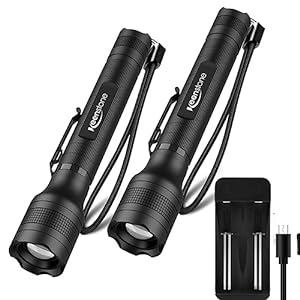
When it rains, it’s dark and gray – but you can do something about it! Good lighting is always a must on any camping holiday. Pack a bright, handy, and waterproof flashlight to explore the campsite at dusk. A headlamp also gives you light while you pitch your tent under the cloudy, gloomy sky.
Very important: don’t forget to your camping lantern! With the lantern, you light up your tent when you want to eat or read. You can also carry a portable solar lantern for additional support.
Would you like to make a pleasant ambience appear warmer through the tent? Place LED fairy lights in your tent or on the roof of the pavilion. In addition, light some candles, which spread coziness with their flickering.
- Pro tips: Lamps with 18650 rechargeable batteries are often much brighter than lamps with AA batteries.
10. Impregnation Spray & Seam Sealer
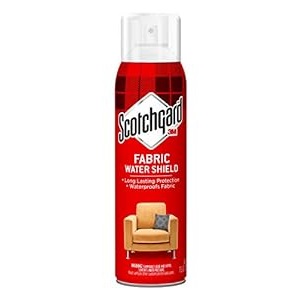
You should waterproof your clothes and tent before arriving at the campsite. In an emergency, it is always practical to have a good waterproofing spray on your packing list. Do your shoes get wet in the first small puddle? The waterproof jacket of your neighbor is leaking? You can help.
One of the most common storm damage to the tent: The wind pulling too hard on the tent fabric and a seam becomes leaky. To prevent your tent from running full of water in the rain, you have to seal the seam with a seam sealer. Your tent will then be as waterproof as a new tent.
11. Stable Rope/Paracord
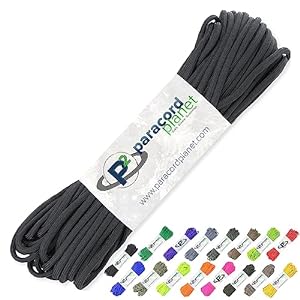
A small roll of paracord is an incredibly useful accessory when camping. Are you wondering what you need the rope for? You need it when a guy line on the tent breaks in the wind or you want to tighten the anchoring of your pavilion. With a tarpaulin or some tarps, you can build a rainproof shelter.
An improvised clothesline in the awning will help you dry your clothes. Many tents have equipment loops on the roof for this purpose, which you can attach to the leash.
12. Soft Aning Carpet

Do you love getting out of the sleeping cabin barefoot in the morning and don’t want to end up in wet grass or mud? Then an awning carpet is right for you. If your awning has a floor, the carpet is still worth it. The carpet is warm and soft. It protects you from contact with the cold, damp tent floor.
A good awning carpet is soft and breathable so that no unpleasant smells can build up under the carpet. At the same time, carpet is water and dirt repellent. Small amounts of water or mud that you carry into the tent with your shoes are not a problem.
- Pro tips: If it’s really muddy, put a waterproof tarpaulin under the awning carpet.
13. Waterproof Clothing and Shoes
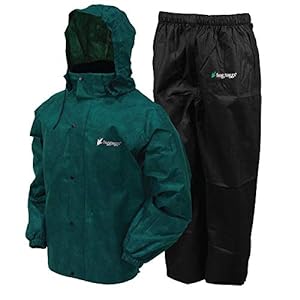
Your rainwear should be light, waterproof, and breathable. Clothing with at least 4,000 mm water column and more than 4,000 MVTR breathabilities reliably protects you from rain and you will feel comfortable even during physical activity.
Make sure that the rainwear has taped seams, wrist cuffs, and an adjustable hood. Avoid wearing cotton under your rain gear. Cotton absorbs moisture instead of passing it on to the outside.
- Pro tips: take a spare set of underwear with you in a waterproof packing bag. If your equipment is flooded, you are on the safe side.
14. Exciting Entertainment
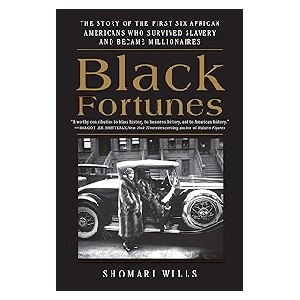
Sometimes one or the other plan falls through in rainy weather. Of course, you don’t have to sit in the tent all day and stare at the wall. Use your free time to read the book you’ve always wanted to read. Or play an exciting game with your family and friends! Here are some ideas for you…
- Uno– the classic for big and small
- Black Stories– brains for puzzle fans with a lot of black humor
- Settlers of Catan (card game)– the duel for the principality
- Just One– can you guess the secret word?
- Munchkin– a card game full of monsters, treasures and humor
All the games in this list take up little space in your luggage and can be played at a small table and on the tent floor.
Other Essential You Can Also Consider…
Here’s a list of some additional items you should consider bringing…
- Rain cover for backpack
- Umbrella
- Rain boots or waterproof boots
- Extra pairs of socks
- Quick-dry base layers
- Waterproof stuff sacks
- Sleeping bag liner
- Sleeping pad
- Stove and fuel
- Firewood
- Waterproof containers for food storage
- Non-perishable food items
- Biodegradable soap
- Toilet paper
- Extra plastic bags for waste disposal
- Multi-tool or camping knife
- Duct tape (for quick repairs)
- Map and compass
- Portable solar charger
- Basic first aid kit
- Emergency whistle
- Camp chairs
- Travel pillow
- Insect repellent
- Sunscreen and lip balm
- Repair kit for gear
More Knowledge for You
You now know which important pieces of equipment you should always have with you in the rain. If you need more information about camping in the rain, check out how to stay dry in the rain.
Would you like to know how to turn your tent into a cozy oasis on wet days and which activities are still fun? Learn here how camping in the rain is fun!
If it not only rains but also the rumble of thunder and lightning strikes near your tent, you are in danger. Find out how to camp safely in a thunderstorm.
Conclusion: Pass on Your Wisdom
Camping in the rain is a skill. Knowing how to have fun in nature despite the bad weather and stay dry makes inexperienced campers jealous.
Do you still remember the days when you sat in a cold, damp tent yourself? Share your experience of camping on rainy days. Or tell me what equipment you take with you when camping in the rain.
Thank you for reading.